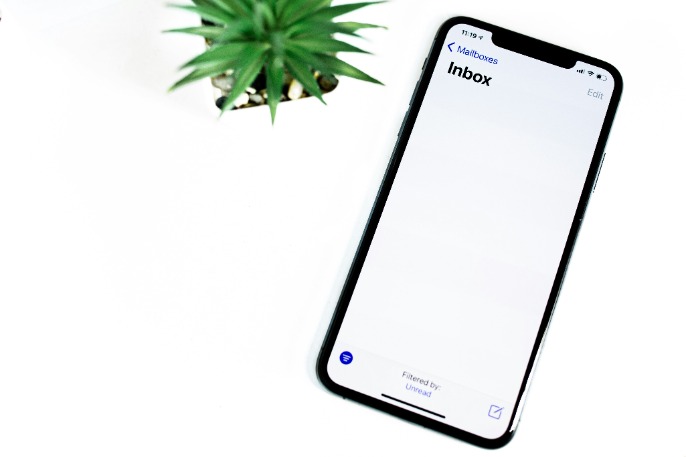Content creation has become one of the core strategies that marketers apply for brand promotion and sales boost. Blog posts, articles, white papers, social media posts, and other types of content are widely used to drive traffic to the main website. It is obvious that content is the protagonist of everything, but you should create a content funnel strategy first. We have prepared this article for you so that you learn more about what the content marketing funnel is. Here you will also discover more the basis of a content marketing funnel and its origins from the content marketing sales funnel. This article will also provide you with the tips on how to create a new or adjust the current content funnel strategy.
What Is a Content Marketing Funnel?
First of all, we need to discover what a content marketing funnel is and what components it contains. In brief, a content marketing funnel visualizes the customer journey with a brand, starting from basic information about a company to detailed product overviews.
A content marketing funnel is a necessary thing in your strategy if you want to generate more leads and generate higher revenue. It also helps to create valuable content that attracts visitors through organic search or referral traffic. The latter comes from a backlink service with the use of targeted keywords and phrases as anchor text.
If you want to organize your content properly and distribute it within various marketing channels, then a content marketing funnel would be a tool for that. So let’s get deep into detail and discover the components of a content marketing funnel.
Various sources indicate 3 to 5 levels of a content marketing funnel, though we will focus on the three main ones:
Top level
Middle level
Bottom level
Let’s imagine a whirlpool in the ocean to visualize how the content marketing funnel functions. A whirlpool emerges on the water’s surface and narrows down towards its epicentre. Such an example illustrates the structure of a content marketing funnel and ensures a better understanding of the content funnel strategy,
Top Level
The content marketing funnel starts with the top layer – it is aimed to increase awareness about a company. It also implements all possible mechanisms to attract customers’ attention to a company before providing any specific information.
As the top level of a funnel is aimed to attract users’ attention and increase their awareness about a company, the following content types are common at this stage:
Blog posts
Social media posts
Podcasts
Videos
Blogs and social media platforms are usually used for creating content at the top level of the content marketing funnel. Blog posts, social media posts, podcasts, and videos are ideal for providing a brief overview of a company and the products it offers. Most businesses take full advantage of social media to also boost their online presence.
This stage is usually associated with new leads and potential customers, so you should be very careful. Creating content for the top level of the funnel requires attention to how you present your brand and how it is perceived.
To measure your efforts and define whether you do success at this first stage, analyze the following metrics:
Organic traffic
Total traffic
Bounce rate
Time spent on page
Views, shares, and other social media engagement indices.
Middle Level
Once the first level of the content marketing funnel is overcome, users would have a strong desire to learn more about your product. Here comes the middle level of the funnel where educational resources and detailed product overviews are introduced.
The most commonly used types of content at this stage are:
How-to guides
Landing pages
Case studies
Webinars
Interviews
As you see, all those materials are aimed to introduce details about the features of a product or describe how to use it. For instance, how-to guides show exactly how your product could be applied and which particular problem it addresses. The same goes for webinars and interviews though in a slightly different form – the experts represent your product in action in a visual and more interactive manner.
To measure how your content performs at the middle level of the content marketing channel, use the following metrics:
Conversion rate
Number of leads
Number of visitors
If you want to ensure better results and achieve a higher number of sales overall, you might already introduce a discount at this stage. This would definitely be a delight for your leads, which would predispose them to purchase.
Bottom Level
As a rule, not all users pass from the middle to the bottom level of a content marketing funnel – this is absolutely okay. The second stage provides more details on the company’s product, and their users decide whether a product is really capable of satisfying their needs or not.
Once people are confident that the product is capable of resolving their needs, they would also be interested in trying it out and feel it at their fingertips. Therefore, you might consider preparing a demo session or a narrow-topic webinar to show how your product functions. Offer a free trial for those who want to try your product by themselves.
Your potential customer would want to know how others react to your product. They will be searching for customer product overviews and success stories. So creating success stories and integrating customer reviews would constitute the principal content types at this funnel stage.
The bottom level of the content marketing funnel uses the following metrics:
Number of free trial requests
Conversion rate
Revenue
ROI
Analyzing the ROI coefficient would also help define how your business performs in general. The revenue and ROI metrics also determine how investors react toward your business.
Why Use a Content Marketing Funnel?
While it is already clear what a content marketing funnel is, there still might be doubts about whether it is worth being implemented. The answer is a definite yes! Similar to the B2B content marketing sales funnel, it will help you increase revenue and purchases.
In turn, an educational content funnel strategy would be a great tool if you aim to expand your target audience. Such a funnel provides a clear overview of what types of content to craft and for which purpose.
How to Create a Content Funnel Strategy?
Content makes up a lion’s share of the digital marketing strategy at nearly every company. Check Cloud Tweaks to discover all the advantages digital marketing offers to businesses.
Before you create a content funnel strategy, you should first explore top content marketing funnel examples. All of them would be different but you will definitely find the one which would be applicable to your business as well. Use it as a template for a content funnel strategy and adjust it according to your business goals and objectives.
In most cases, a content funnel strategy includes the following components:
The types of content to be created at each funnel level.
The metrics to measure the content performance.
Marketing channels to distribute and share content.
Content publication calendar.
Objectives and goals such as conversion rate and revenue.




























